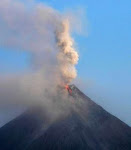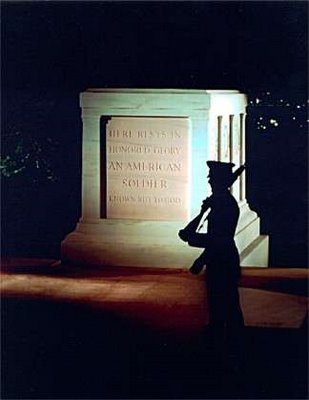Bonifacio Day
The Katipunan Supremo: A Self-taught revolutionary
In August of 1896, at Pugadlawin, Kalookan, Bonifacio gathered his men and fearlessly urged them to tear up their cedulas as a symbilic gesture of their defiance of Spanish rule. Thus began, the Philippine Revolution against Spain.
A difficult childhood gave Andres the strenght to face all odds with great courage and determination. He was the eldest of six children of Catalina de Castro and Santiago Bonifacio.
At the age of fourteen, Andres was orphaned and had to taken on the task of caring for his younger brothers and sisters. To do this, he had to quit school and look for ways of supporting his family.
Together, they made rattan canes and colorful fans from Japanese paper. Even if he stopped going to school, Bonifacio continued reading the novels of Rizal and Dumas; he also read about international law and French Revolution. In later years, he too began to write about what the Filipino should know to appreciate the desire and the need to be free.
During his late teens, Andres was able to work as a clerk, then as a sales agent. later on, he became a warehouseman in Tondo.
Bonifacio and Jose Rizal were both members of La Liga Filipina, a movement working peacfully for reforms in the Philippines. However, the two national heroes never knew each other personally. When Rizal was arrested in 1892, Bonifacio realized that Spain would never grant the requested reforms. So, on the night of July 7, 1892, Bonifacio, Valentine Diaz, Deodato Arellano (brother in-law of Marcelo H. del Pilar), Teodoro Plata (Andres' brother in-law), Ladislao Diwa, and a few others secretly met in a house along Azcarraga Street (now Claro M. Recto Street) near Candelaria Street (now Elcano Street). On that night, the Katipunan was formed. The members formalized their membership by signing the pact with their own blood. In 1895, Bonifacio became the Supremo, or leader.
In the same year the Katipunan was founded, Bonifacio married Gregoria de Jesus, who chose Lakambini or muse as her codename in the Katipunan. She took charge of the confidential files, revolvers, seals, and other materials of the society.
On August 23, 1896, the katipuneros gathered secretly at the farm of Juan A. Ramos, son of Mechora Aquino, at Pugadlawin in Kalookan. The Spaniards had gotten wind of the Katipunan and deciphered its secret codes. The katipuneros are now fugitives and in great danger. Together, the katipuneros agreed to fight to the death for their cause.
"Bring out your cedulas and tear them to pieces to symbolize our determination to take up arms," Bonifacio challenged his members. The katipuneros tore up their cedulas and shouted, "Long live the Philippines." The cry at Pugadlawin signaled the start of the Philippine Revolution.
The inital plan to attack Manila did not push through due to lack of arms. Instead Bonifacio, Emilio Jacinto, and some others attacked the Spanish arsenal at San Juan del Monte. Bonifacio failed to anticipate the possible arrival of the Spanish reinforcement troops, who caused the Filipino's defeat.
Bonifacio and his men retreated with heavy casualties.
Bonifacio's life as a militant katipunero ended on Mount Hulog, a mountain in Maragondon, Cavite. Bonifacio and his younger brother Procopio were accused by the Spaniards of rebellion and were sentenced to die. On May 10, 1897, Mariano Noriel handed a sealed envelope to Lazaro Makapagal and instructed him to take the two Bonifacio brothers to Mount Taal. Once there Bonifacio requested Makapagal to open the envelope. In it was the order to execute both brothers. Makapagal had no recouse but to follow the command, lest he be punished severely. In doing so, he executed the Filipino who sprearheaded the Philippine Revolution against Spain.
Source: Filway's Philippine Almanac Centennial Edition
Downfall
While Bonifacio's personal campaigns were less than successful, the revolutionaries in Cavite had greater success, led by officers coming from the upper classes, including the celebrated Emilio Aguinaldo. Thus, they sent out a manifesto calling for a revolutionary government of their own, disregarding Bonifacio's leadership. A council comprising of Bonifacio's men and the Magdalo and the Magdiwang, two locally-based rival Katipunan factions, held a convention in Tejeros, Cavite to establish a unified front and settle the issue of leadership of the revolutionary movement. The Magdalo faction was led by Baldomero Aguinaldo, cousin to Emilio Aguinaldo. In the elections, the Cavitenos voted their own Emilio Aguinaldo President. Bonifacio, due to the lack of a power base in the province, was voted Director of the Interior. However, a member of the Magdalo faction, Daniel Tirona, questioned Bonifacio's qualifications for high office, declaring him uneducated and unfit for the position. Bonifacio was slighted, all the more so since he had previously asked that the results of the election be respected by all. Invoking his authority as Supremo, he threatened those in attendence with a pistol and declared the results of the Tejeros Convention as null and void and left in a rage. Later, he wrote to Jacinto about his misgivings about the whole matter, as he suspected Tirona of spreading black propaganda against him and fixing the ballots (as some other leaders also suspected). Regrouping his forces, he attempted to return to the province of Morong (now Rizal), where he had a strong base and support. Tried by a moot court 'in absentia' by the Aguinaldo faction, he was condemned as a traitor to the Revolution and given the death penalty. An arresting party of Magdalo soldiers caught up with Bonifacio in the town of Indang and a skirmish ensued, in which Bonifacio was wounded and his brother Ciriaco killed. He and his other brother, Procopio, were captured and were subsequently executed by firing squad on May 10, 1897 at Mt. Nagpatong. Co-patriots of the Revolution regarded this an ugly blot laid at Aguinaldo's door, though in fairness Aguinaldo originally wanted them banished instead.


























